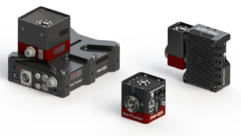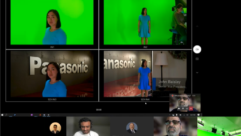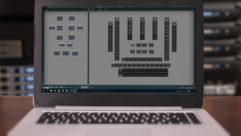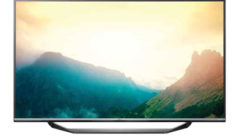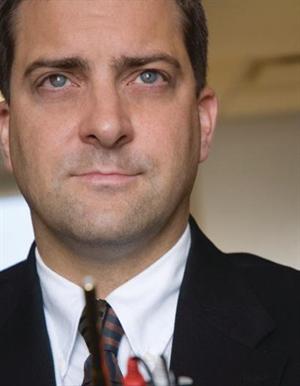

Next Steps in Green AV
InfoComm’s Sustainable Technology Environments Program is almost finished. Get the inside scoop from someone who is helping write the green AV rating system.
Raymond Kent
Unless you’ve been living under a rock deep in the woods on top of a mountain, you know that buildings use a lot of energy. You know that for several years, architects and engineers have been beaten over the head with LEED (Leadership in Energy and Environmental Design) or some other green rating system. Admittedly, most of the energy that buildings consume is used by HVAC and lighting systems–but not all of it.
If you’re an AV and technology systems designer, you know that you can be a fly in the ointment. Your gear requires juice to operate and can sometimes fry an egg with its heat output, potentially increasing HVAC and power demands and thereby offsetting any desired energy savings from green building designs.
But it’s not as if architects can simply cut technology out of the equation in the name of green. Long gone are the days when architects designed structures that were just structures. Nowadays, technology goes everywhere, and it’s the end user who’s driving its pervasiveness. As buildings become smarter and technology more prevalent, architects and engineers are faced with the fact that computers, audiovisual equipment, security and life-safety systems, and other devices on the plug-load side are a driving factor in several key building programming areas. Having a sustainable technology plan is no longer a luxury, but a necessity.
First, there are physical considerations. Technology requires space, square footage, a place to be. Along with other building programming requirements, such as offices, conference rooms, kitchens, and lobbies, technology spaces chew up their own precious corner of a building envelope. If the architect provides square footage for an equipment room, that room may also need humidity control, cooling, and power. Add a data center or control room for AV equipment, for example, and you could quickly see an uptick in energy demand.
Second, AV must factor into the building’s overall carbon-footprint strategy. How energy efficient are the projector and the sound system in the conference room? How do you manage the energy demands of a large deployment of mediated spaces, as on a college or corporate campus? What is the cradle-to-grave impact of the project’s technology components?
Third, designers must address ease-of-ownership. The end user has a responsibility to diligently turn off technology when it’s not in use. This can be accomplished with a full-blown room-automation system, intelligent building technology, or by simply hitting off buttons (lots of them). What no one wants is a building owner who allows lights, computers, and AV systems to be left on 24/7, only to be disappointed when the building’s energy efficiency isn’t up to design goals.
So now the architect and engineer have been tasked with and spent countless hours designing a new net-zero LEED Platinum facility only to realize that many rooms will be very technology-centric (i.e., potentially energy inefficient). They have little choice but to look to the technology designers on the team to help reduce energy demands. This should be a value-added service of AV and technology designers and integrators.
These specialists should turn to the Sustainable Technology Environments Program (STEP) to deliver the service. In 2009, the InfoComm International board of directors authorized the creation of a Green AV Task Force whose mission was to create a body of knowledge and best practices for sustainable audiovisual design. Part of the mission included working to obtain Innovation Credits for AV systems within the U.S. Green Building Council’s LEED framework, which has become part of the everyday vernacular in 21st-century architecture. When the task force started its work, it was hard to define a green AV system, so InfoComm’s board of directors decided to scale back the pursuit of Innovation Credits and develop its own rating system (STEP) through a collaborative effort of 12 task force members, several of whom, including myself, are LEED APs.
So now where do we stand? STEP is scheduled to be released this year as a rating system for electronics-based technology projects rooted in sustainable design, integration, and operation (see “Green Stepping,” July/August 2010). The task force is rapidly approaching completion of the initial draft of the credits and reference guide to be released for public comment in the very near future.
The ultimate success of the STEP initiative will be the recognition from the owner and architect side that early inclusion of technology designers is a must–especially when the project sets lofty goals for green building and energy efficiency. As a LEED AP who’s worked the AV and technology angle for major international architecture firms, I’ve participated in many LEED design charrettes that didn’t include a technology discussion simply because there wasn’t a LEED credit specific to technology. And when I brought the topic up, I was often met with blank expressions. It is no wonder: LEED barely addresses nonbuilding technology.
STEP will, and it also will provide the opening that AV and technology professionals need to jump-start discussion early–when sustainability goals are set–in order to inform the rest of the design team about better choices. STEP will appreciate the entire life cycle of the systems that it seeks to prescribe, from planning and budgeting, to design and construction, to owner operations.
We’re designing STEP to include everyone, even manufacturers, so that the AV and technology industries can develop more sustainable solutions and change blank stares to looks of recognition through tangible, actionable direction. It’s our hope that STEP will also create for the industry a body of knowledge around formal best practices, as well as provide benchmark data that’s generated as projects are completed. For owners, these elements of STEP will translate into real return on investment information and ongoing operations strategies that will ultimately affect their bottom lines.
Raymond Kent, CTS, Assoc. AIA, LEED AP BD+C, is an award-winning technology and entertainment designer who works with leading architecture and performing arts companies.


